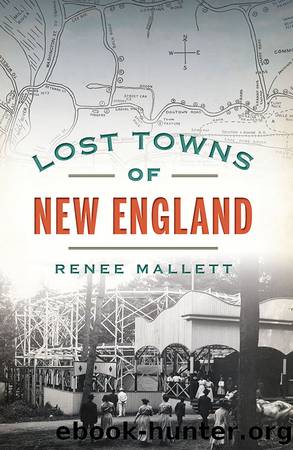Lost Towns of New England by Renee Mallett

Author:Renee Mallett [Mallett, Renee]
Language: eng
Format: epub
Tags: History, United States, State & Local, General
ISBN: 9781467147866
Google: A81AEAAAQBAJ
Publisher: Arcadia Publishing
Published: 2021-09-27T02:43:37+00:00
DOGTOWN, MASSACHUSETTS
Itâs nearly impossible to write about abandoned villages in New England without saying something about Dogtown, Massachusetts. For those oftentimes unknowable reasons these things happen, Dogtown has fallen into the realm of popular culture. It has been immortalized in a song by Harry Chapin, has become the setting of many books and was the subject of a series of paintings by Marsden Hartley, created in the 1920s and 1930s.
The settlement was not always called Dogtown; in fact, speculation over the canine name is one of the charms of the village that has helped keep its story going, even after all of its residents have long been gone. Dogtown began its life with the names Town Parish and Common Settlement. Such a common name makes it easy to see why the more mysterious Dogtown moniker has stuck.
Located on Cape Ann in Massachusetts, roughly split between where Gloucester and Rockport exist today, Dogtown was settled in 1693. To the first settlers, it must have appeared like a nearly alien landscape. The land is liberally dotted with large glacial boulders. But it was just far enough inland that colonists felt protected from attack by sea and featured an abundance of clean freshwaterânot always so easy to find so close to the salty ocean. The residents did well enough for themselves that the town hired a shepherd to watch, communally, over the flocks of sheep that were owned by all of the local farmers that grazed on the common. He was paid $300 annuallyânot an insignificant sumâwhich says something about the prosperity of the community.
In the late 1700s, the tides had turned for Dogtownâquite literally. With the American Revolution at an end, the coast was safer than it had ever been before. Fishing in Gloucester became a major driving force of the local economy. With the port in Gloucester shipping not just to Boston but overseas, even common sailors became wealthy men. Suddenly, it did not seem so smart to the residents of Dogtown to live inland with their sheep. As Gloucester became more of a hub, roads began to be built that bypassed Dogtown completely.
By 1828, Dogtown was all but a ghost town. Many houses stood decrepit and empty. Less savory people began to move into them. Some sources credit the Dogtown name to this period, either for the large dogs that were kept by the residents for protection or as an insult to the status of the people who had moved in. It was not just the poor who ended up in Dogtown. Anyone who did not fit the norm of the period might end up thereâindependent women, same-sex couples, cross dressers and feminists, to use the modern terms. Many of the residents who remainedâin truth, mostly older widowed women without the means to pick up and move elsewhereâwere rumored to be witches.
Thomazine âTammyâ Younger is perhaps the most famous of the Dogtown witches. A self-styled queen of witches, she would stop wagons on the roads between the settlement and Gloucester, threatening to curse the oxen if she was not given food or money.
Download
This site does not store any files on its server. We only index and link to content provided by other sites. Please contact the content providers to delete copyright contents if any and email us, we'll remove relevant links or contents immediately.
| Ancient & Controversial Knowledge | Ghosts & Hauntings |
| Hermetism & Rosicrucianism | Magic Studies |
| Occultism | Parapsychology |
| Supernatural | UFOs |
| Unexplained Mysteries |
Animal Frequency by Melissa Alvarez(4399)
Sigil Witchery by Laura Tempest Zakroff(4181)
Real Magic by Dean Radin PhD(4075)
Fingerprints of the Gods by Graham Hancock(3943)
Aleister Crowley: The Biography by Tobias Churton(3589)
Journeys Out of the Body by Robert Monroe(3572)
The Rosicrucians by Christopher McIntosh(3467)
Alchemy and Alchemists by C. J. S. Thompson(3452)
Mysteries by Colin Wilson(3398)
Hitler's Monsters by Eric Kurlander(3269)
The Hatha Yoga Pradipika (Translated) by Svatmarama(3234)
John Dee and the Empire of Angels by Jason Louv(3132)
Wicca: a guide for the solitary practitioner by Scott Cunningham(3127)
Infinite Energy Technologies by Finley Eversole(2939)
Book of Life by Deborah Harkness(2869)
Dark Star Rising by Gary Lachman(2830)
The Book of Lies by Aleister Crowley(2802)
Aliens by Jim Al-Khalili(2788)
To Light a Sacred Flame by Silver RavenWolf(2769)
